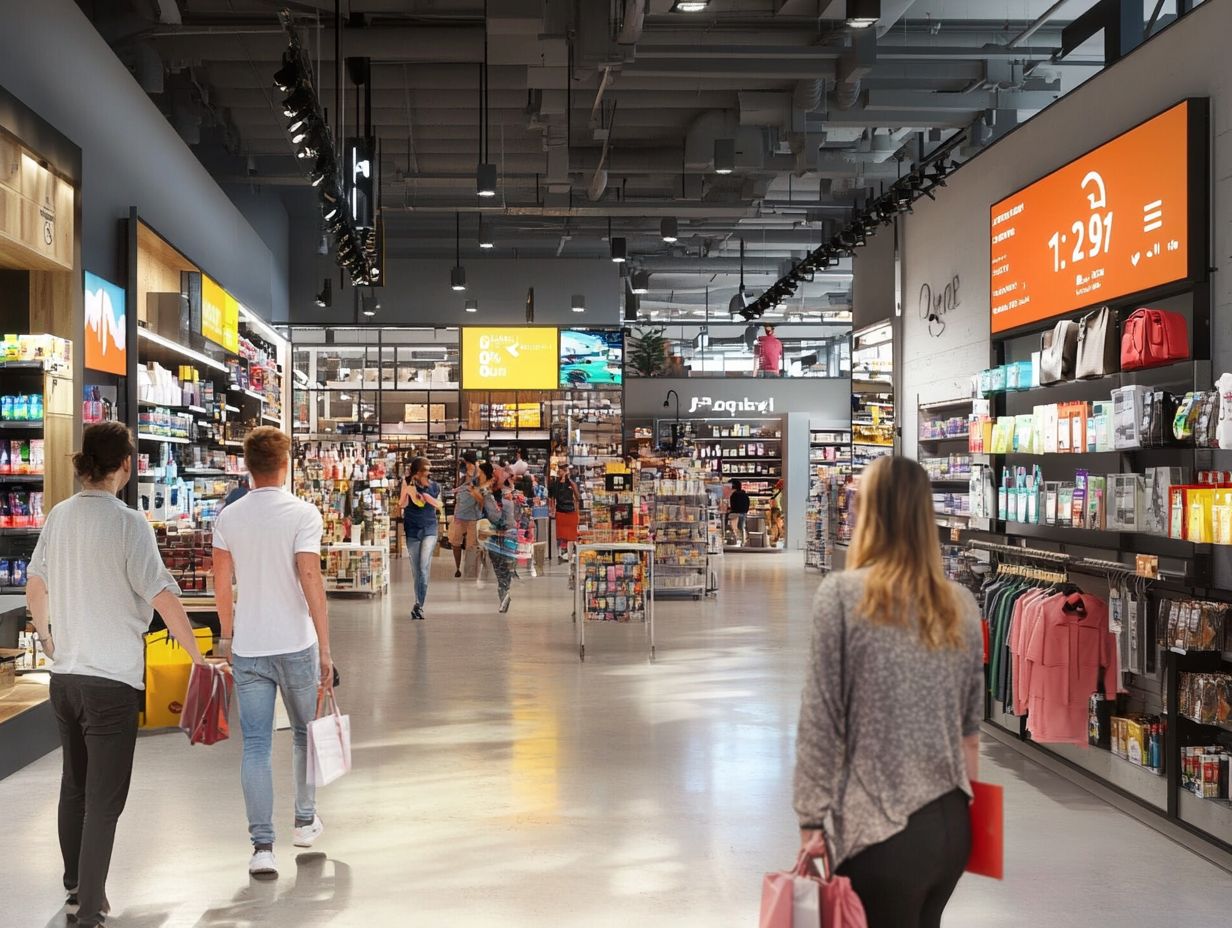In today’s competitive retail landscape, understanding customer behavior is essential for success. Foot traffic analytics provides valuable data insights into how customers interact with your store, offering analytics that can enhance your loyalty programs through improved customer engagement and customer retention. This article explores what foot traffic analytics is, its significance for loyalty programs and initiatives, and how businesses can leverage this information to identify key customer behaviors, conduct behavior tracking, and create personalized offers. Discover practical strategies for effectively implementing these analytics and see your loyalty program thrive.
Understanding Foot Traffic Analytics

Foot traffic analytics involves analyzing the movement patterns of shoppers within a physical store or location. Retailers use foot traffic analytics to enhance customer engagement, improve retail performance, and optimize their sales and marketing strategies.
By understanding foot traffic analytics, businesses can gain valuable insights into consumer behavior, shopper patterns, and footfall trends through comprehensive behavioral analytics. The data obtained from foot traffic analytics enables retailers to make informed decisions that optimize sales and other strategies.
Additionally, foot traffic analytics helps retailers comprehend consumer behavior and footfall trends, allowing them to enhance the overall customer experience. This improvement can lead to increased sales optimization, more effective marketing strategies, and enhanced retail analytics, ultimately fostering brand loyalty and driving revenue growth through incentive programs.
What is Foot Traffic Analytics?
Foot traffic analytics involves collecting and analyzing data insights on retail customers, their shopping behavior, and shopping habits to enhance the customer journey.
High-tech methods for tracking customer foot traffic, such as predictive analytics and location analytics, enable retailers to monitor how many people enter their stores, the pathways they take, and how long they stay inside. This information helps retailers optimize store layouts, develop effective marketing strategies, and implement location-based marketing to improve the in-store experience.
Various data collection methods, such as mobile analytics—which tracks customer movement via their smartphones—POS integration—which records purchase information—and quantitative analysis can be utilized for comprehensive data-driven decisions.
For instance, combining these two methods provides insights into the times of day when customers are most likely to shop and highlights opportunities for improving the customer experience during those peak periods.
Why is it Important for Loyalty Programs?

Foot traffic analytics significantly influence loyalty programs by providing businesses with crucial insights into customer behavior and engagement strategies.
By tracking foot traffic patterns and conducting traffic analysis, companies can gain a deeper understanding of the underlying motivations and preferences of their customers, which helps inform the design of effective loyalty programs and targeted advertising.
This data allows businesses to develop personalized marketing strategies that enhance customer engagement and improve the overall customer experience.
Loyalty programs tend to experience higher engagement rates and improved ROI measurement when the loyalty rewards align with what customers desire, ultimately leading to increased retention rates and consumer loyalty.
Targeted engagement strategies ensure that customers feel acknowledged and valued through personalized offers and targeted advertising, thereby strengthening their connection to the company and its brand, enhancing brand engagement.
Utilizing Foot Traffic Analytics for Loyalty Programs
Foot traffic analytics can optimize loyalty programs and enhance customer engagement by leveraging personalized marketing campaigns and analyzing shopper trends.
Identifying Key Customer Behaviors

Identifying key customer behaviors through foot traffic analytics enables retailers to gain a deeper understanding of shopper trends and foot traffic patterns.
By analyzing these behaviors through demographic analysis, businesses can effectively tailor their strategies to target specific shopper demographics and engage in customer profiling. Demographic data plays a crucial role in uncovering consumer insights and audience targeting about various customer segments, allowing companies to create personalized marketing campaigns that resonate with their audience, ultimately influencing market segmentation.
Additionally, leveraging engagement metrics such as dwell time, visit frequency, and visit duration, along with behavioral tracking and traffic patterns analysis, can provide valuable insights into how shoppers interact with products and store layouts, influencing the overall user experience. This comprehensive understanding not only enhances customer satisfaction and loyalty tiers but also fosters customer loyalty, ultimately leading to increased sales, conversion rates, and improved overall performance in a competitive retail landscape through effective competitive analysis.
Targeting and Personalizing Loyalty Offers
Targeting and personalizing loyalty offers through foot traffic analytics enhances customer engagement and boosts the performance of loyalty programs.
According to 96% of marketers surveyed in the 2022 Global State of Digital Marketing report, foot traffic data provides valuable customer insights into customer behavior and preferences, enabling the creation of targeted marketing strategies and effective promotional campaigns. This information helps marketers determine when and where to present targeted offers by revealing how many customers visit their stores at specific times, which products are most popular, and who their target customers are.
While loyalty metrics are crucial for understanding whether a shopper has returned to a store after an initial visit, through site visits and return customers analysis, it is also important for businesses to comprehend the reasons behind these returns, using behavioral analytics for customer acquisition. By integrating foot traffic analytics with loyalty program metrics, businesses can develop programs that encourage customer loyalty through targeted offers.
This approach not only enhances loyalty program effectiveness but also strengthens the emotional connection between customers and the store, ultimately improving their shopping experience and contributing to brand loyalty.
Implementing Foot Traffic Analytics in Your Loyalty Program

Foot traffic analytics can be integrated into a loyalty program by systematically collecting data through data collection methods and strategically incorporating that information into existing marketing efforts to improve marketing analytics.
Collecting and Analyzing Data
Collecting and analyzing data related to foot traffic is essential for understanding customer behaviors and enhancing loyalty programs.
Two effective methods that businesses can employ to gain deeper insights into customer interactions with their physical spaces are mobile tracking and historical data analysis.
Mobile tracking enables real-time data monitoring of foot traffic patterns and site analytics, while historical data analysis offers context that highlights market trends over time using analytics tools.
Analytics tools play a crucial role in interpreting this data, transforming raw figures into actionable insights, and facilitating predictive analytics for better decision making.
These tools assist in evaluating customer feedback and identifying key engagement metrics and business metrics, ensuring that organizations can refine their engagement strategies and enhance the overall customer experience and operational efficiency.
Integrating Foot Traffic Analytics with Loyalty Platforms
Integrating foot traffic analytics with loyalty platforms gives the power to retailers to leverage comprehensive qualitative data insights that enhance both ROI and customer experiences, facilitating effective business intelligence.
By capturing and analyzing customer movement patterns, businesses gain a deeper understanding of customer touchpoints and behaviors. This enhanced understanding facilitates a more seamless integration of online and offline experiences in an omnichannel strategy, allowing for the refinement of marketing strategies and the development of data-driven decisions.
For instance, identifying when and where customers spend time in specific areas of a store can inform campaigns that target promotions in alignment with those consumer behaviors. This approach not only increases the effectiveness of marketing campaigns and promotional strategies but also enables businesses to meet customer expectations in real-time, fostering consumer loyalty and maximizing revenue opportunities through effective incentive structures.





